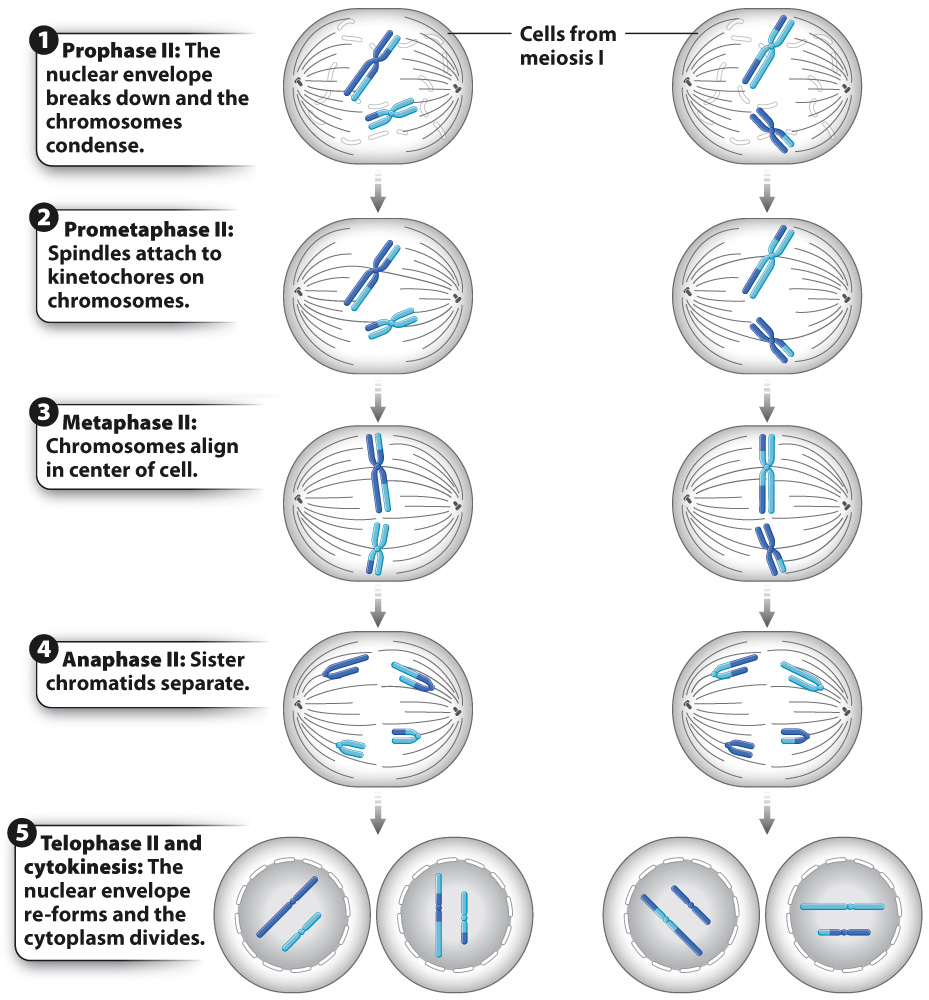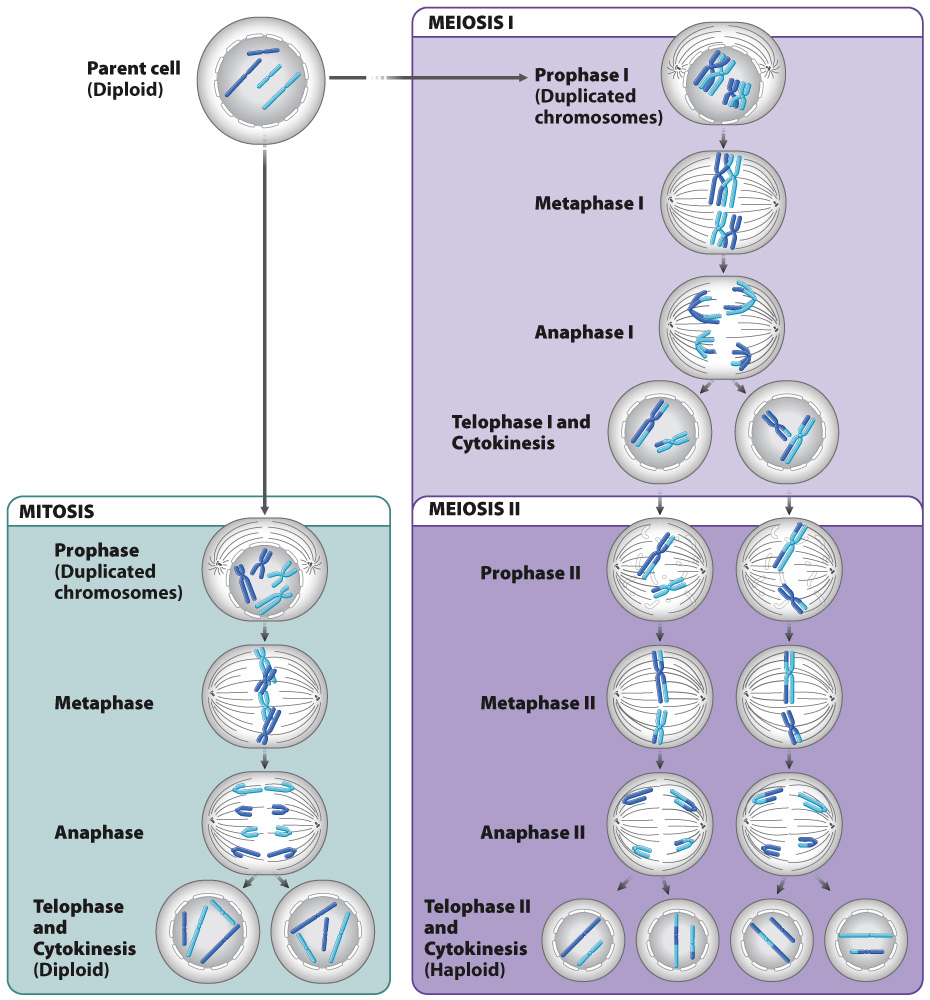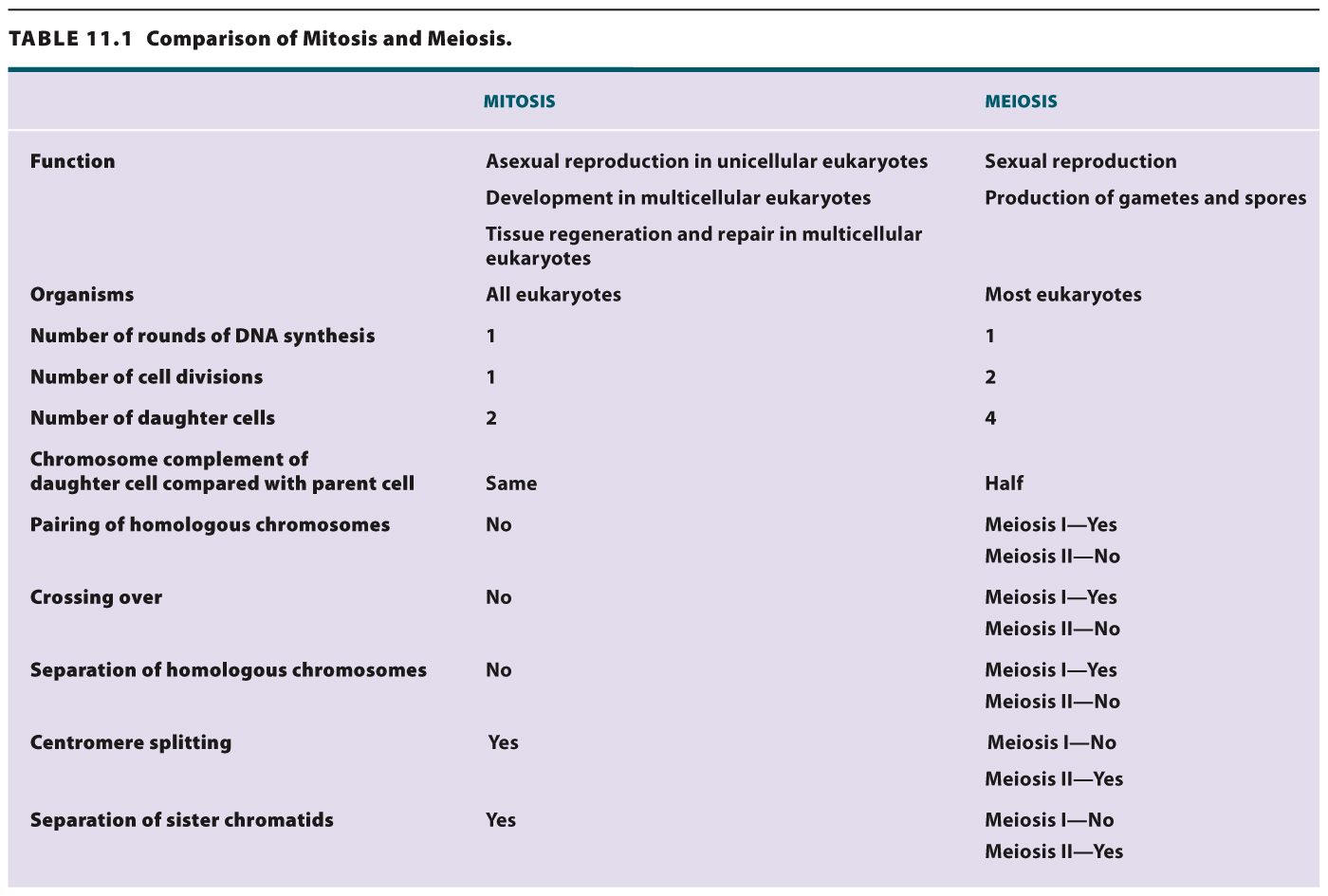The second meiotic division resembles mitosis.
Now let’s turn to the second meiotic division, meiosis II, shown in Fig. 11.11. In this division, sister chromatids separate, creating haploid daughter cells. Starting with prophase II, the second meiotic division is in many respects like a normal mitotic division, except that the nuclei in prophase II have the haploid number of chromosomes, not the diploid number. In prophase II, the chromosomes recondense to their maximum extent. Toward the end of prophase II, the nuclear envelope begins to disappear (in those species in which it has formed), and the spindle begins to be set up.
229
230

In prometaphase II, spindles attach to kinetochores and, in metaphase II, the chromosomes line up so that their centromeres lie on an imaginary plane cutting across the spindle.
In anaphase II, the centromere of each chromosome splits. The separated chromatids, now each regarded as a full-
Finally, in telophase II, the chromosomes uncoil and become decondensed and a nuclear envelope re-
Quick Check 6 The genetic constitution of each cell after telophase II is different from the others. What two processes during meiosis result in these differences?
Quick Check 6 Answer
The products of meiosis are different from each other as a result of two key processes: (1) crossing over, which occurs at essentially random positions along the chromosomes and creates unique combinations of genetic differences that may be present in the maternal and paternal chromosomes, and (2) random orientation of the homologous chromosomes on the spindle in metaphase I, so each nucleus receives a random combination of maternal and paternal homologs.
231
A comparison of mitosis and meiosis gives us hints about how meiosis might have evolved (Fig. 11.12 and Table 11.1). During meiosis I, maternal and paternal homologs separate from each other, whereas during meiosis II, sister chromatids separate from each other, similar to mitosis. The similarity of meiosis II and mitosis suggests that meiosis likely evolved from mitosis. Mitosis occurs in all eukaryotes and was certainly present in the common ancestor of all living eukaryotes. Meiosis is present in most, but not all, eukaryotes. Because the steps of meiosis are the same in all eukaryotes, meiosis is thought to have evolved in the common ancestor of all eukaryotes and has been subsequently lost in some groups.

